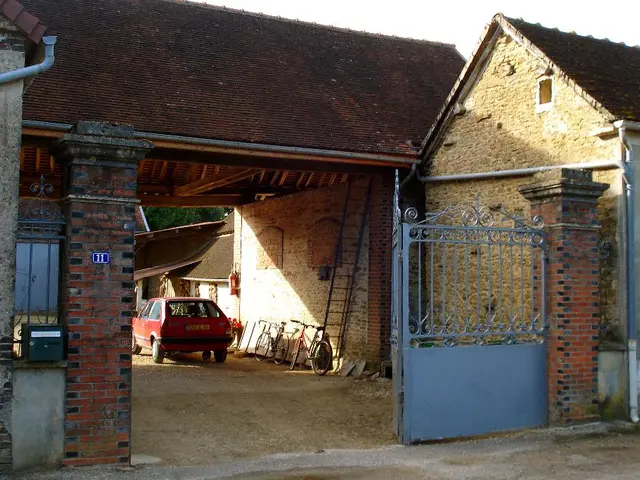Discovered: A 500-Year-Old Tudor-Era Pendant in Warwickshire
Inexperienced Metal Detecting Enthusiast Discovers Five Centuries-Old Pendant Honoring Henry VIII's First Wedding
Uncovering relics of the past is always a thrilling endeavor, but metal detectorist Charlie Clarke's find in 2019 took things to a whole new level. He stumbled upon a golden, heart-shaped pendant, heavily linked to the Tudor period.
As Clarke recounted to The Guardian, he let out a schoolgirl-like scream upon extracting the pendant from about a foot deep in the earth. This priceless artifact, weighing approximately 300 grams of 24-carat gold, showcases the union of Henry VIII and his first wife, Katherine of Aragon.
The heart-shaped pendant embodies Katherine's emblem, the pomegranate bush, and Henry's, the Tudor rose. Moreover, it bears the initials "H" and "K," and the words "TOVS and IORS" - an early English Franglais pun referencing the French word "toujours" (always) and "all yours."
However, this remarkable discovery has raised questions about the pendant's origins and purpose. Researchers suspect it might have been crafted as a prize for a banquet or tournament due to its hastily made appearance. Intriguingly, they found no evidence of the pendant in Tudor-era portraits, suggesting it might have been fabricated primarily for display rather than wearable jewelry.
As curator Rachel King from the British Museum remarked, "[Tudor] artifacts with links to Katherine of Aragon are rare, as many items associated with her were destroyed." King ponders the pendant's journey from the royal court to the Warwickshire soil, hinting at intriguing tales yet to be unveiled.
Rachel King shared her insights with both The New York Times and The Guardian, revealing the museum's excitement and awe upon examining the treasure. The pendant transcends the boundaries of traditional Tudor artifacts, and its true value remains a mystery until its appraisal.
Clarke, the cafe owner, stands to gain a substantial sum from the find, which he intends to invest in his four-year-old son's education. Amid the intrigue and speculation surrounding the heart-shaped pendant, the joy and potential life-changing impact of this discovery are evident.
In the world of metal detecting, the thrill of striking gold can be incredibly rewarding - a sentiment that Clarke captured when he exclaimed, "It was just outstanding. Nobody thinks you're ever going to pull out that, in my lifetime especially - I can imagine, in 30 lifetimes."
As we delve further into the Tudor period, discoveries like this remind us of the intricate tapestry of history and the enduring allure of the past. This heart-shaped pendant offers a glimpse into the life of Henry VIII and Katherine of Aragon, alluding to the love, power, and intrigue that characterized the Tudor era.
If you find yourself enamored with the Tudor treatment of jewelry and historical artifacts, or if you're curious about the possibilities surrounding this precious pendant, don't hesitate to explore further!
Who knows? Your curiosity might lead to your own historical discovery just waiting beneath the surface. Happy hunting!
Insights: The Tudor period, marked by opulence and extravagance, saw a flourishing of jewelry and ornaments. These artifacts often held significance during lavish events like tournaments and banquets, where they were showcased to demonstrate wealth and status. The loss or concealment of such items may have occurred due to various reasons, such as theft, misplacement, or burial during times of conflict. The Tudor era was renowned for its political instability, which might have contributed to the disappearance of valuable artifacts. The hastily made heart-shaped pendant discovered in Warwickshire may have been designed as a prize for a banquet or tournament, echoing the practices of the Tudor period.
- Unraveling the history of the Tudor era isn't limited to large-scale events or royal portraits; even general-news articles like sports, sports-betting, and culture can provide insights into the period's opulence, as seen with the discovery of the hastily made heart-shaped pendant, possibly fashioned for a banquet or tournament.
- Engaging in the pursuit of historical artifacts, whether through metal detecting or academic research, offers glimpses into the intricate tapestry of the Tudor era, much like uncovering a precious prize from a sports event, imbued with cultural significance and historical value.








